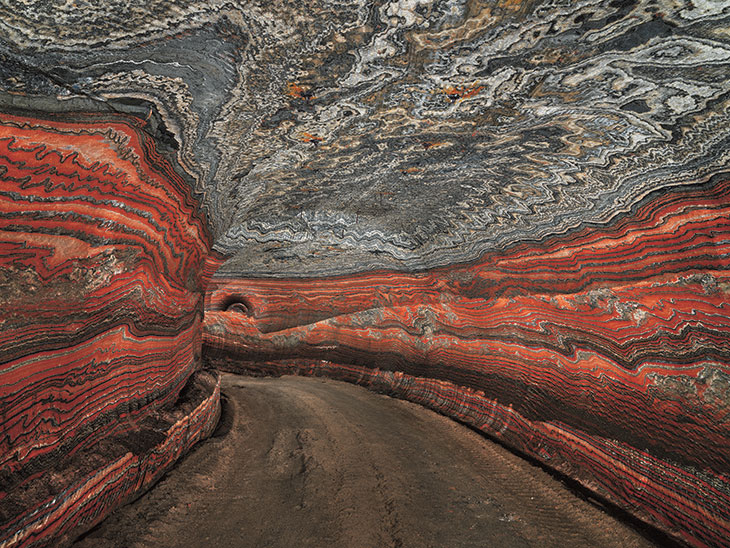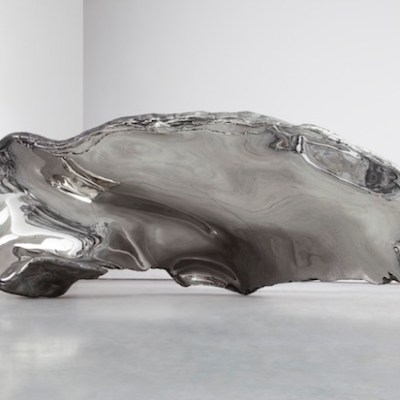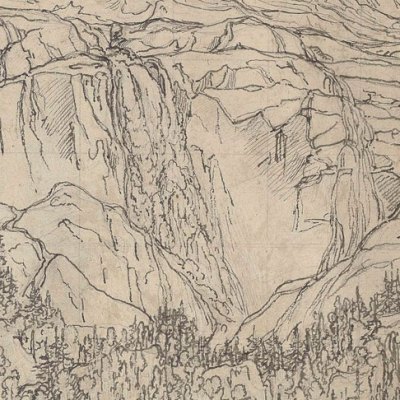The Canadian photographer talks to Fatema Ahmed about The Anthropocene Project – two exhibitions, a film and a book exploring man’s effect on Earth and capturing the spirit of what some scientists consider to be a new geological epoch.
When did you become interested in the Anthropocene, and how did this project with the film-makers Jennifer Baichwal and Nicholas de Pencier come about?
In 2010 or even earlier I was in a National Geographic article about the Anthropocene, which was where I first heard the word – the whole magazine was devoted to water. And then Jennifer said, hey, what about making it a better-known word, because the word packs a lot of ideas into it? One of the core ideas is the existential threat to not only humans, but all other life forms on the planet. The Anthropocene doesn’t necessarily have to end in a negative way – we both agreed at the time that we shouldn’t paint this as the end of the world as we know it. It could be an epoch with a reasonable outcome if we can get our act together, or it could be a terrible one. We wanted to keep that open-endedness in all our thinking in the design of the project.
Can you explain the different elements that make up the project?
From the outset, we knew that it would be an exhibition, that it would be a book and it would be a film, because that’s what we did with Watermark [2013]. The new thing we added was that whereas before I was brought into [Baichwal’s and de Pencier’s] world of film, this time I’m bringing them into the world of art, the museum world. They’ve done some museum work in the past, but now it’s going to be a much more engaged stage for them, with video installations. We’ve also worked with augmented reality and a lot on virtual reality.
How did you decide which subjects would be better as still photographs and which would be more suitable for film?
We looked at visuals and text, and story-boarded ideas, and we looked at all the categories the Anthropocene Working Group of scientists were using and borrowed them to help shape our visual categories. What made this an intriguing collaboration was that in the past [Baichwal and Pencier] dropped into my projects midway through or near the end, but with this one we started together from scratch. With every location we said, well this is how we can afford to film it, this is how we can afford to do the stills. In some cases, the stills didn’t really work for what I wanted and the film could deal with it in a better way. By and large it had to be a consensus.
Uralkali Potash Mine #2, Berezniki, Russia, 2017 (2017), Edward Burtynsky. Courtesy Nicholas Metivier Gallery, Toronto; © Edward Burtynsky

Do you deliberately aim for a tension between how beautiful some of your images are and the reality of the environmental damage they are depicting?
What I’ve always tried to do is bridge the extended landscapes of our existence. In other words, we get to have the lives we have in cities because we extend and extend out into nature and into the places where the resources we need exist. No single species, as the top predator of the planet, has ever expanded to this degree. What I am trying to do with my images is to take back ownership of those landscapes. We need to understand them as much as we need to embrace our cities. At the end of the day I am trying to make the connection through visual images that these are our landscapes, and that we own landscapes. We could choose to call them terrible, or just disastrous – that’s your prerogative, but then you should also turn around and look at the city and call it terrible and disastrous. They are equivalents as far as I’m concerned.
Was there anywhere that was particularly different to get access to?
If you look at the 10 most polluted cities in the world, Norilsk is on the list. It’s a closed city: you can’t get into it without sponsorship – without backing from some fairly strong arm of the Russian government – so we attached ourselves to the scientific arm, in particular the geological department. Norilsk is one of the largest producers of nickel and copper in the world. There are no roads into the city. You can only fly in or take a boat across the Northern Sea Route at certain times in the year – it’s 350km north of the Arctic Circle, and 180,000 people toil away there on a daily basis. Every time anybody with cameras and video cameras gets there, the immediate assumption is that they are there to do a story on how polluted Norilsk is. It’s a razor dance to try to convince everybody that it’s okay. We didn’t go in there to say that it’s the most polluted city in the world; we were there saying that, in terms of resource extraction, this is one of the largest examples of it on the planet.
How optimistic or pessimistic do you feel about the pace of man-made climate change?
It’s hard at this particular moment to be optimistic, given that some of the biggest economies in the world, which have been the biggest polluters in the world, are saying, let’s keep going guys – forget about this so-called global warming. I’m still optimistic that we have the tools to solve the problems, or at least the worst of them – and that we can if we put our minds to it. My optimism seems to get a little thinner when it comes to whether we’re going to get there in time. I am extremely concerned that we’re not moving fast enough and the window of opportunity to prevent the worst of the consequences is getting narrower and narrower.
‘Anthropocene’ is at the Art Gallery of Ontario, Toronto from 28 September–6 January 2019 and at the National Gallery of Canada, Ottawa from 28 September–24 February 2019.
From the October 2018 issue of Apollo. Preview and subscribe here.



